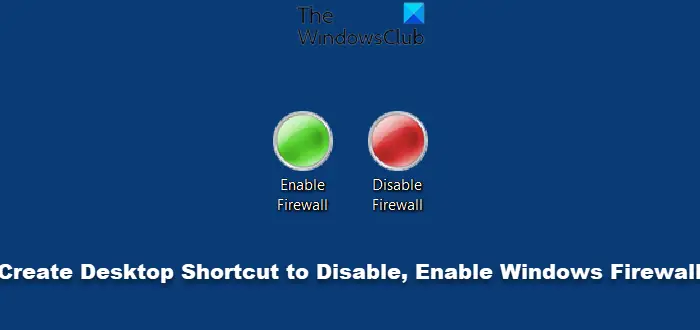If you need to disable or enable the Windows Firewall frequently, you may want to create a shortcut for it on your desktop instead of going all the way through the Control Panel. You may find this especially handy if you find the firewall obstructing any of your running tasks.
Disable or Enable Windows Firewall desktop shortcut
You can create a desktop shortcut as follows in Windows 11/10. Right-click on your desktop > New > Shortcut. To disable firewall, type or better still, copy-paste the following in the Location field. Click Next > Name it Disable Firewall > Finish. Give it a suitable icon. To Enable the Firewall copy-paste instead: and name it Enable Firewall. Again give it a suitable icon. You will have to Run it as Administrator. On clicking on both, a black CMD box will appear and then disappear with the letters OK in it. Thus, you can easily disable or enable Windows Firewall on your Windows computer. NOTE: The netsh firewall command has been deprecated.
Use “netsh advfirewall firewall” instead. That is: To disable firewall, use: To Enable the Firewall use: Speaking of desktop shortcuts, you might want to check out Handy Shortcuts, – our freeware that lets you create tons of shortcuts in a click. Go here to learn how to lock Windows PC and create its desktop shortcut.
Is it safe to disable Windows Firewall?
No, it is not. The default settings of the Windows Firewall can protect against programs and remote access to your Windows PC. If you are testing something, it is ok to disable it temporarily; but enable it as soon as possible. That said, the best way to troubleshoot issues with the Firewall is to identify the program and add it as an exception in the firewall settings instead of disabling the security.

